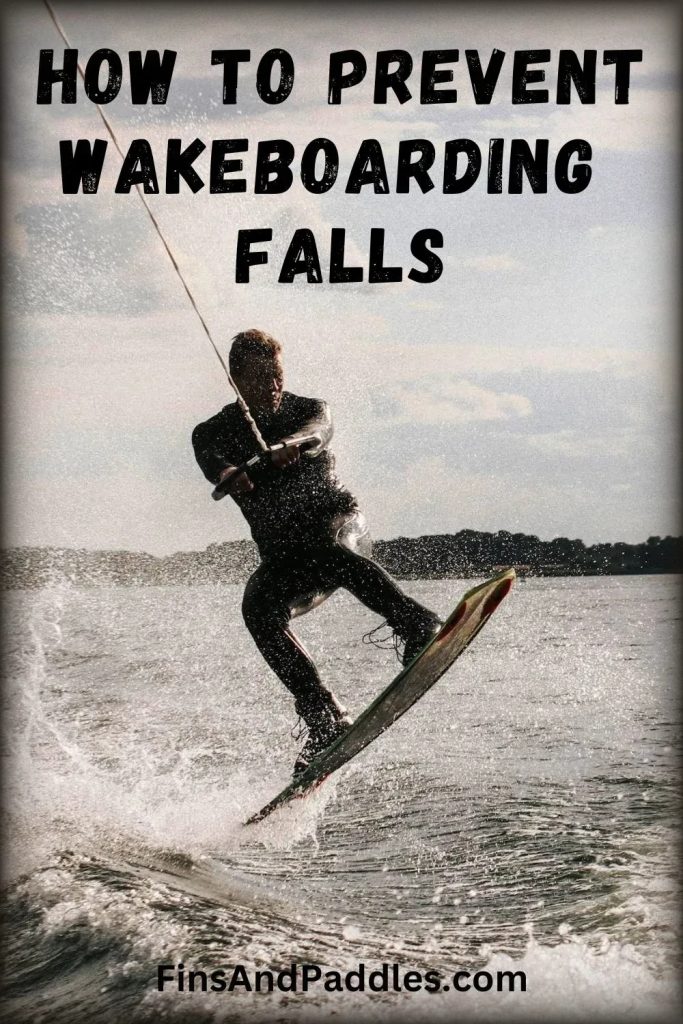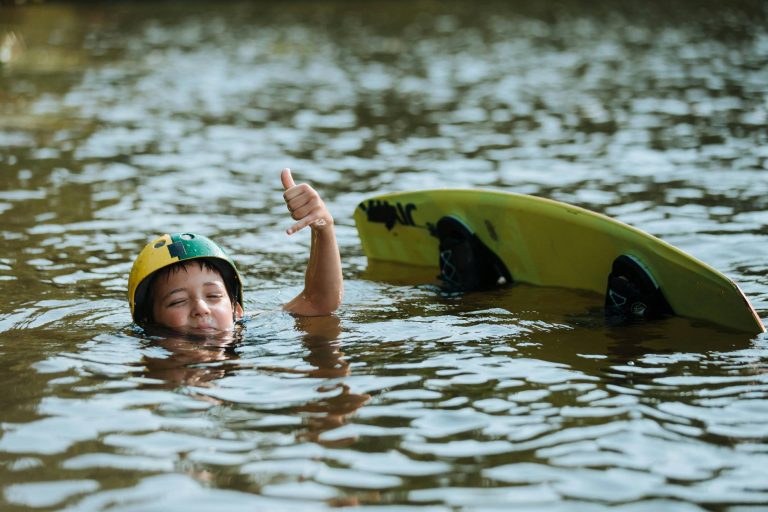Wakeboarding is a watersport that combines elements of surfing, snowboarding and water skiing. As with any adventure sport, there is the possibility of falls and other accidents happening. How do you prevent wakeboarding falls? There are strategies and practices you can adopt that can minimize your chances of injury while you still enjoy practising the sport.
How to Prevent Wakeboarding Falls
Understand the Risks Involved
The first step in preventing wakeboarding falls is to understand the risks involved in wakeboarding. Improper stance, lack of focus, loss of balance, unexpected changes in water conditions or boat speed can all cause you to fall. Being aware of these factors can help you prepare and react correctly.
Use the Correct Equipment
To minimize your chances of falling, it’s very important that you use the right equipment. Make sure that the wakeboard you’re using is suitable for your skill level and that your bindings fit correctly. Your PFD (personal flotation device) should also fit comfortably and not restrict movement.
First Master the Basics
Be sure you have a solid grasp of the basic moves before you attempt any advanced moves. This would include understanding how to control your board, how to maintain a correct stance and how to navigate wakes. Building a strong foundation will give you better control and reduce the possibility of falling.
Develop a Strong Core and Good Balance
Good balance is super important when you’re wakeboarding. Doing yoga exercises or using a balance board can strengthen your core muscles and improve your balance. Once your core is strong, you’ll be more steady and ready to spring back if you’re about to fall.
Stay Focused and Alert to Prevent Wakeboarding Falls
Be aware of your surroundings and how to water is behaving. If you are alert you will be prepared to react to changes and not be caught off guard.
Learn How to Fall Safely
In spite of your best efforts, falls can still happen. Knowing how to fall correctly can prevent you being injured. When you realize you’re about to fall, you can minimize the risk of injury by immediately letting go of the tow rope so you don’t get dragged or tangled.
As you fall, try to relax your body and avoid tensing up. Keep your arms close to your body and tuck your chin to your chest to protect your head and neck. Aim to fall flat on your back or side, as this will distribute the impact more evenly across your body. Avoid falling face-first or with your limbs extended, to avoid hitting the board. Once in the water, stay calm, signal to the boat that you’re okay and wait for the driver to circle back and pick you up.
Practise Regularly
Besides improving your skills, regular practice will also improve your ability to react instinctively and maintain your balance to prevent a fall. The more time you spend practising, the more familiar you’ll become with the dynamics and movements of wakeboarding.
Learn from Professionals
Consider taking a series of lessons from an experienced instructor. He can give you personalised feedback and teach you techniques that can improve your balance and control. All this can help towards preventing falls.
Stick to Your Limit
Be aware of what you can do and what you can’t. Don’t go beyond your skill level too quickly. Attempting fancy maneuvers or riding in conditions you’re not prepared for can increase the risk of falling.
Look After Your Gear
Check your wakeboarding equipment regularly and keep it in good condition. Worn or damaged gear is unreliable and can cause falls. Make sure that everything is in good working order before you step into your bindings.
Most Importantly…
Make safety your top priority when you’re on the water. Taking the time to practise and prepare can help prevent wakeboarding falls, which means you can look forward to more enjoyable and accident-free wakeboarding sessions.
How to Recover from a Wakeboarding Fall
Falls will be an inevitable part of the learning process for any beginner wakeboarder. Knowing how to recover from a wakeboarding fall and continue on your board is good for your safety as well as your self-esteem.
9 Steps to Recovering from a Wakeboarding Fall
1. Stay Calm and Assess the Situation.
From the moment you fall, ensure that you stay calm. Panicking can cause a rushed recovery that could increase the risk of injuring yourself. Take a moment to check if you have any injuries or pain before you try to get back up.
2. Signal for help, if needed.
If you’re injured or cannot get back onto the board by yourself, signal to the spotter or boat driver that you need assistance. Safety comes first – it’s always better to ask for help, rather than exacerbate a possible injury.
3. Return to a safe position.
Once you’re sure that you’re all right, move to a safe postion in the water. This usually means either treading water or floating on your back while you watch the oncoming boat. To avoid a collision, ensure that others can see you.
4. Recover your board.
If you’ve become separated from your board, swim towards it if it’s safe to do so. Alternatively, wait for the boat to circle back and retrieve the board for you. Always keep the board on the side of your body that’s away from the boat to avoid potential injury.
5. Prepare to remount.
Once you’re ready to get back onto the board, set it in front of you with the bindings facing upwards. Slip each foot into its binding and secure each one snugly.
6. Communicate with the boat driver.
Before you recommence, inform your driver that you’re ready to continue and discuss any necessary adjustments that might make your ride more comfortable. Clear communication can prevent further mishaps and result in a better wakeboarding experience.
7. Recommence slowly.
Don’t be tempted to stand up immediately the boat starts to move. Instead, let the movement of the boat gradually pull you upwards, then slowly rise to your feet when you feel stable. Remember to keep your knees slightly bent and your arms extended.
8. Ponder the fall.
Once you’ve recovered and are safely back on the board, take some time to consider what caused the fall. Was it a sudden boat movement, a misjudgement of the wake or a balance issue? Understanding the cause can help you avoid such mishaps in the future.
9. Practise fall recovery.
As with any other wakeboarding skill, recovery from a fall requires practice. Dedicate some time to practising how to fall safely from your wakeboard and getting back on. This will make a genuine recovery process seem more natural and less frightening.
Conclusion
Although falling off your wakeboard is a natural part of wakeboarding, it doesn’t have to be a setback. Following these steps can help you recover from future falls efficiently and safely. Always prioritize safety, keep in touch with your boat team and learn from each fall so that you can become a better wakeboarder.
Pin this image on Pinterest:


